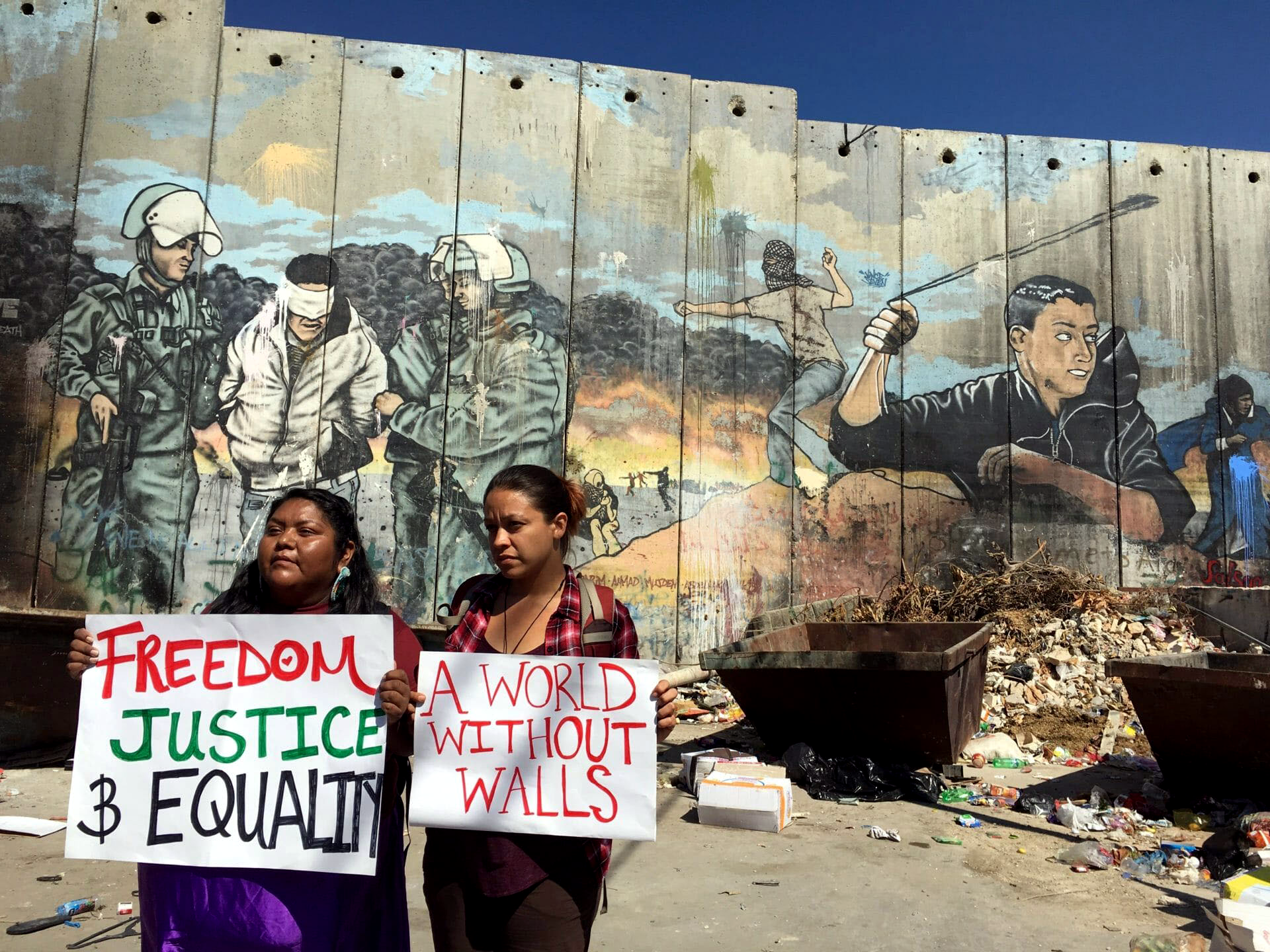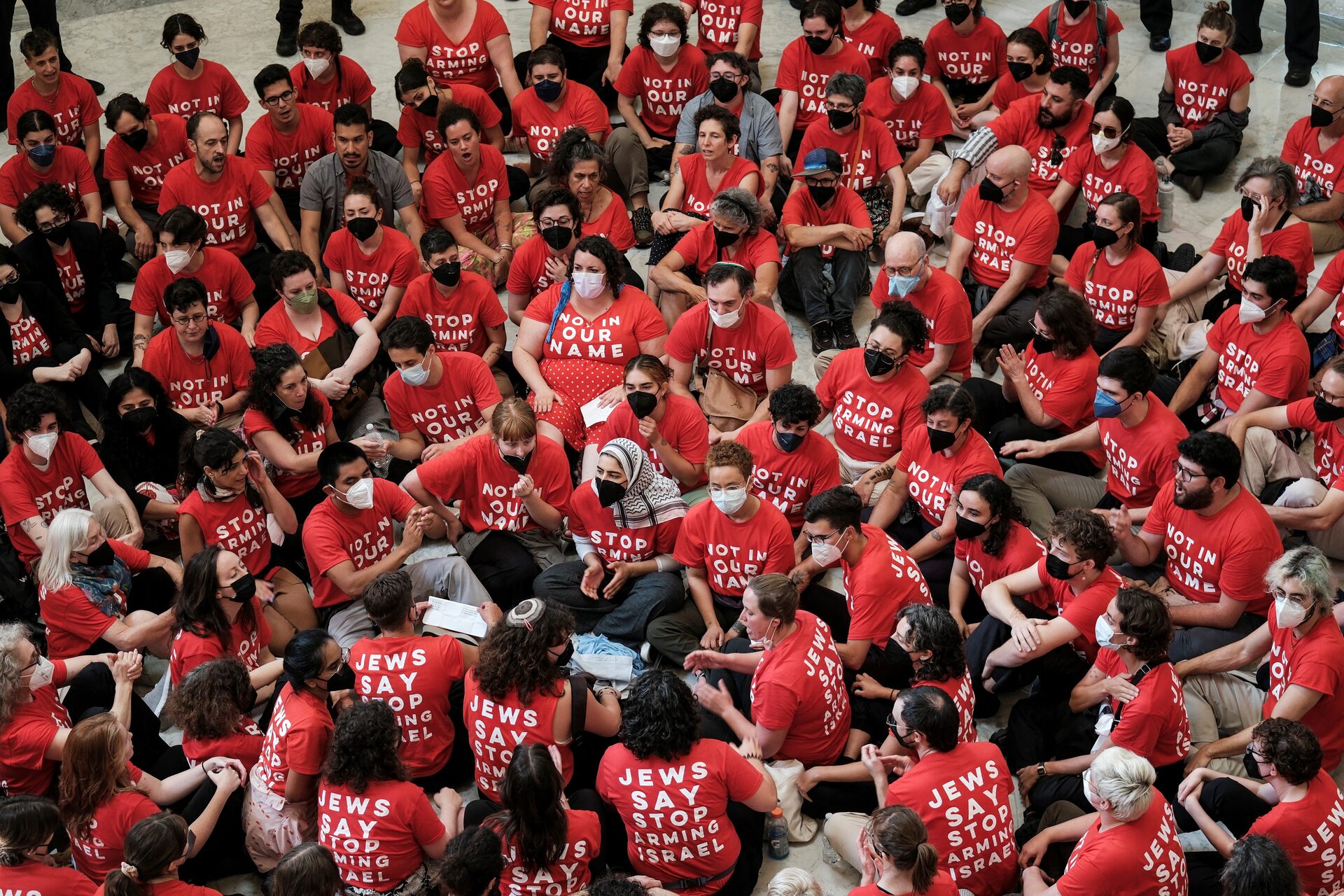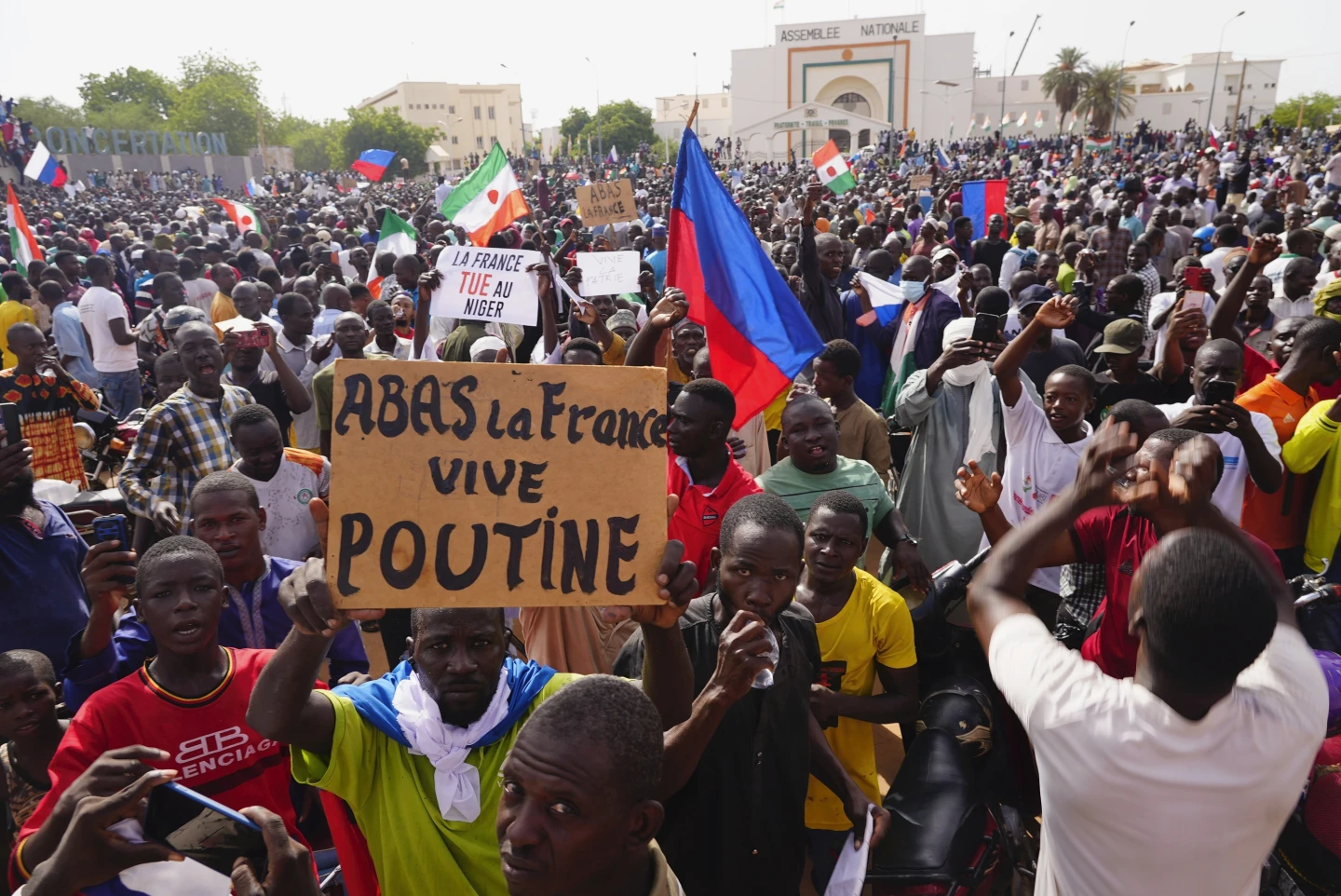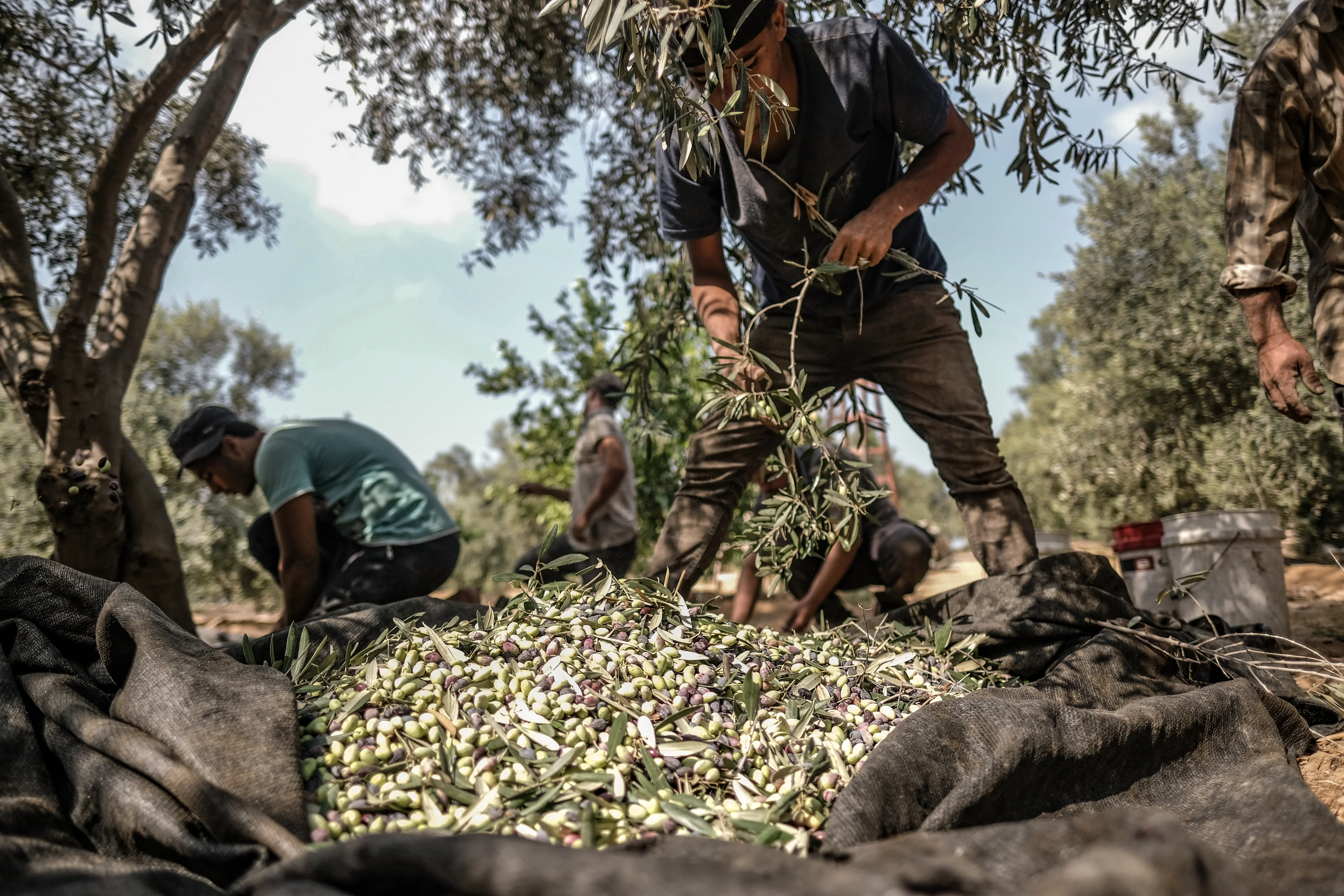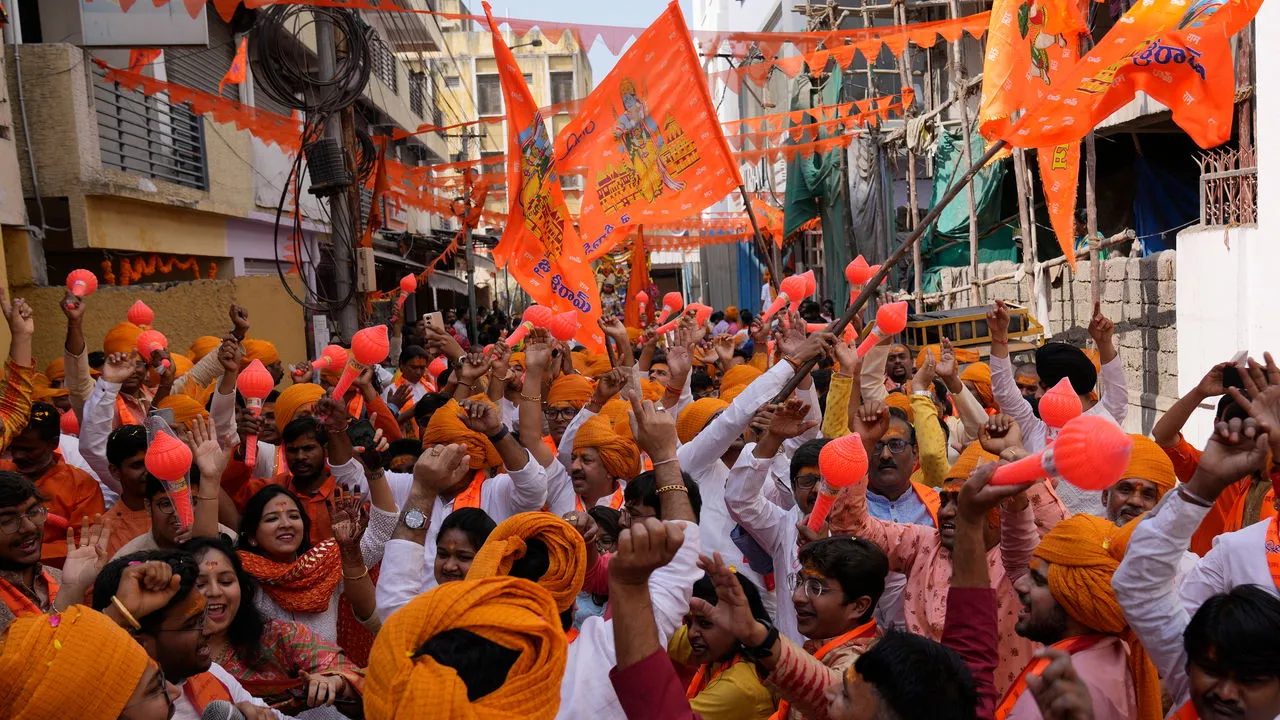Palestine is our Future
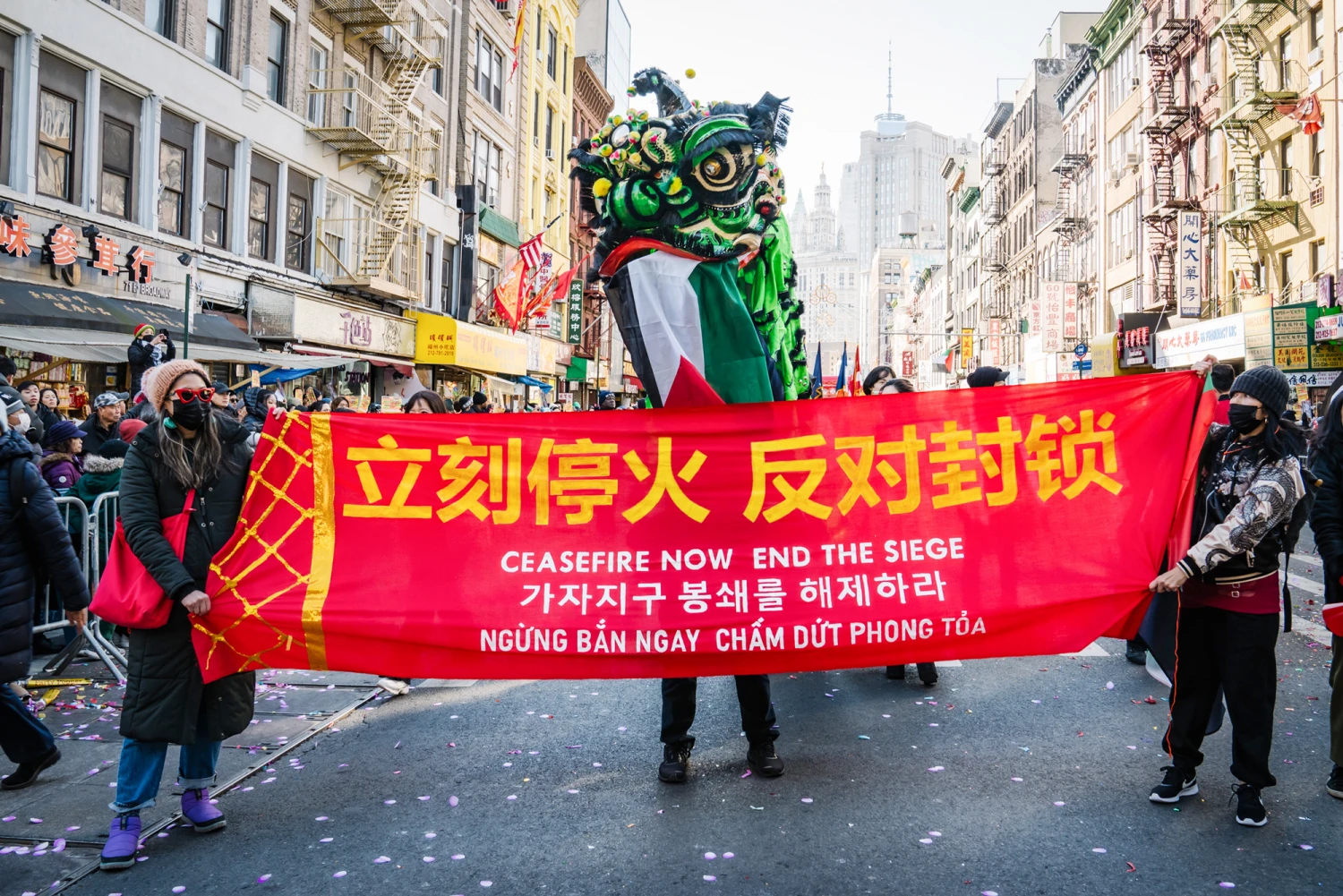
The Asian America of today is not the “Asian America” Yuji Ichoka and Emma Gee coined in 1968, more than 50 years ago. Nor is it the “Asian America” struggling for recognition in the 1980s, organized against the acquittal of Vincent Chin’s murderers. Today, the significance of “Asian America” itself has been plundered by neoliberalism and evacuated of political coherence, as its Pan-Asianist legacy of anti-colonialism and anti-imperialism becomes increasingly unrecognizable. We might look back to the era of radical Asian American solidarity with demoralized nostalgia.
When we look into the past of Asia America, we must come to terms with the fact that we live today in a fundamentally different political reality. Our defining characteristic is our integration into the infrastructure that enables genocide and occupation in Palestine — into the financial, military, technological, and ideological engines that drive American empire in West Asia. Indeed, many of us recognize the anti-Blackness inherent to the “model minority myth” while simultaneously reaffirming it, pursuing elite educations, high incomes, and entrenched ties to global capital. Our fights, from affirmative action (for and against) to representation within executive boards, are fights for inclusion within this system. Indeed, the term “model minority” has become social reality; as Helen Heran Jun writes, Asian Americans “embodied the ideal subject of neoliberal ideologies under global capitalism.” We produce, earn, and never fight back.
After the murder of Vincent Chin in 1982, which was motivated by white Detroiters’ fears of the Japanese automobile industry, “Asian America” transformed from a radical student movement to a liberalizing, ethnonationalist project that sought inclusion within American standards, propelled by our desire for safety. Chin’s death galvanized support across Pan-Asian diasporic communities, led by the Asian American civil rights group American Citizens for Justice (ACJ), fomenting pride in their collective Asian American identity. Chin deserved fair treatment, they argued, just like any other American. Thus, at the same time as American imperialist ambitions expanded in Central Asia (Afghanistan) and West Asia (Kuwait, Iraq, Iran, Jordan, Syria, Palestine), these newly self-identified “Asian Americans” — largely East Asians, Southeast Asians, and South Asians, armed with the goals of education and prestige — found inclusion in the American dream of fair treatment under the law.
Yet decades later, anti-Asian violence has still continued. Even with our acceptance into an inclusive American empire, have we really found safety for us and our communities? Viet Thanh Nguyen writes, “If Asian Americans decline expansive solidarity, we signal that we are not going to take over, that we know our place — that is, until we reach some unknown point when there are too many of us, as once upon a time there were also too many Jews in the Ivy League schools.” Instead, if we understand racist violence against Asian people to be a product of Orientalist anxieties and Western imperial legacies within Asia — the same ideologies that have and continue to motivate American and Israeli colonization of “the Middle East” — we can move past liberal identity politics and look to build solidarity across movements. The corporations, foundations, and nonprofits do not represent us: Dylan Rodriguez describes how the Stop Asian Hate Movement and The Asian American Foundation have colluded with police and the Anti-Defamation League to pass hate crime bills and to lump anti-Asian violence and pro-Palestinian protest together into the empty signifer of “hate.” Under this framework, the only solution to anti-Asian violence is increased discipline through the state’s carceral infrastructure, tying our future to its further violence.
Conditional acceptance cannot save us; Palestine is in Asia, too. Asian America’s betrayal of Arabs, Muslims, and Palestinians at the hands of national Asian American leaders, nonprofits, and foundations, especially during periods of Islamophobic surveillance, reveals their continued investment in the politics of respectability — respectability that requires other Asian Americans (Arabs, Muslims, and Palestinians) to be killed or maimed by the state.
We need new futures. From Chinatown youth and elders organizing against displacement, to South Asian Dalit organizers fighting against caste apartheid, to the mobilization and activation of Arab and Muslim communities against the genocide in Gaza, we know “Asian America,” while currently subsumed in neoliberal identity politics, is not stuck there. Nor is the present inevitable. To move forward from nostalgia — to let it energize us as we create new, expansive solidarities — we need the imagination to move away from safety, and to risk something, risk ourselves. Viet continues: “An expansive solidarity, wherein kinship grows between unlikely others in an ever-widening circle, is much more dangerous, both to the dominant society and to ourselves.” The radical potential of solidarity comes from its threat to expand, to forge unlikely connections, and to claim mutual stakes in each other’s struggles. The students of the 1960s and ’70s understood this. We will too, if we risk ourselves for Palestine and forge our own Asian America in the process.
